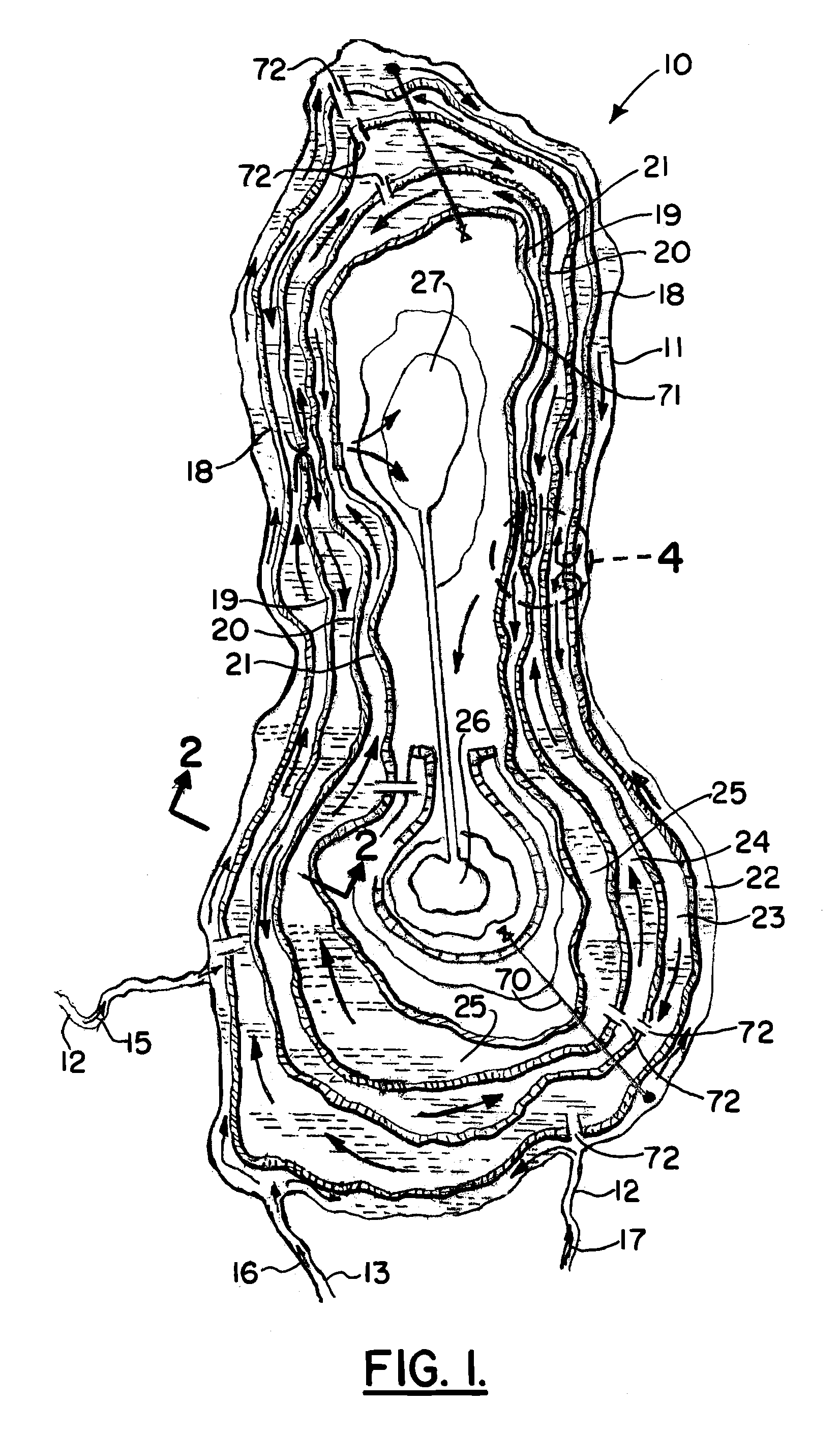Method of restoration of a highly saline lake
a restoration method and lake technology, applied in water cleaning, agriculture, chemistry apparatus and processes, etc., can solve the problems of no restoration, no restoration, and corresponding increase in salinity, so as to facilitate optimization and efficiency, facilitate design flexibility, and enhance safety
- Summary
- Abstract
- Description
- Claims
- Application Information
AI Technical Summary
Benefits of technology
Problems solved by technology
Method used
Image
Examples
Embodiment Construction
[0038]In FIGS. 1-2, a saline lake 10 is shown that has a shoreline 11. However, it should be understood that FIG. 1 is illustrative and not to scale. The saline lake 10 can be a lake that receives inflow from one or more influent streams 12, 13, 14. The method and apparatus of the present invention can be used to restore an existing saline lake such as the Salton Sea located in Southern California. In FIG. 1, each influent steams 12, 13, 14 is provided with an arrow 15, 16, 17 respectively that indicates the direction of flow.
[0039]The influent streams 12, 13, 14 can be existing rivers. A lake that is receiving an influent stream, influent streams, or an influent flow containing salt can increase in salinity. This problem is compounded if the lake does not have an outflow as is the case with the Salton Sea. If there is no outflow, as water flows from the influent streams 12, 13, 14 into the lake 10, the only way for the water to escape from the lake 10 is by evaporation. Evaporation...
PUM
 Login to View More
Login to View More Abstract
Description
Claims
Application Information
 Login to View More
Login to View More - R&D
- Intellectual Property
- Life Sciences
- Materials
- Tech Scout
- Unparalleled Data Quality
- Higher Quality Content
- 60% Fewer Hallucinations
Browse by: Latest US Patents, China's latest patents, Technical Efficacy Thesaurus, Application Domain, Technology Topic, Popular Technical Reports.
© 2025 PatSnap. All rights reserved.Legal|Privacy policy|Modern Slavery Act Transparency Statement|Sitemap|About US| Contact US: help@patsnap.com



